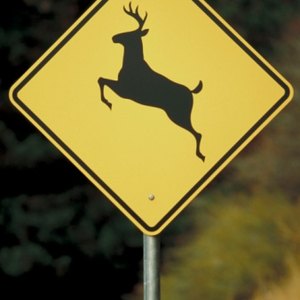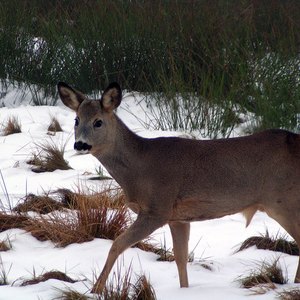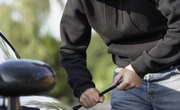
Collisions with deer have been on the rise nationwide, up more than 20 percent over the last five years. According to the Insurance Information Institute, a non-profit industry trade group, there are more than 1.6 millions deer collisions nationwide each year. The cost is not just the $4.6 billion in property damage and medical bills to drivers and passengers. About 200 people a year a killed as a result of these collisions.
The claim procedure for a deer collision is the same as any other accident, although your coverage is based on the optional comprehensive coverage, not collision. In addition to deer (and other animal) collisions, comprehensive covers you for theft, vandalism, flood, weather damage and, depending where you live and policy form, windshield repair. Knowing what to do in advance will facilitate the claim process and potentially avoid problems when the claim adjuster shows up.
When in Doubt, Report Accident to Police

Every state has its own rules about whether to report a collision with an animal or not, depending on the amount of damage to the vehicle or whether there was any injury to driver or passengers. It is better to err on the side of caution, though, since you will then have a detailed report to give to the insurance adjuster. Also, in some states, if you don’t file a report, it may be a misdemeanor leaving the scene of an accident. If there are any injuries, notify the police that you also may need an ambulance.

If you have a camera available, take pictures of the scene, including any factors such as shrubs, snow banks (most collisions occur between October and January) or any other factors that may seem relevant, such as weather conditions or wet pavement. The more information you can provide or record immediately, the faster your claim can be processed.

Use your pad to get as much information from any witnesses that may be available, including name, address and phone number. It may not be necessary, but good to have just in case there is any dispute with your insurance company. Getting the name of the police officer, including badge number, will also make followup contact for a copy of the report easier.

Call your insurance agent or direct insurance claim line as soon as possible. Both numbers should be on the insurance card issued with your coverage. Verify your coverage for the accident, including your deductible level because that is how much you will have to pay yourself. An adjuster will either schedule an appointment to come to the car if it can’t be driven or direct you to a drive-in claim center if available.
Tips
Review your coverage regularly to make sure you have the level you need. Drive with high beams in rural areas when there is no on-coming traffic. Pay attention to caution signs--they are there for a reason.
Warnings
If the deer is still alive, don't try to assist it. An injured animal, no matter how tame looking, is very dangerous. Move the vehicle out of the flow of traffic and wait for the proper authorities to arrive.
References
Tips
- Review your coverage regularly to make sure you have the level you need.
- Drive with high beams in rural areas when there is no on-coming traffic.
- Pay attention to caution signs--they are there for a reason.
Warnings
- If the deer is still alive, don't try to assist it. An injured animal, no matter how tame looking, is very dangerous. Move the vehicle out of the flow of traffic and wait for the proper authorities to arrive.
Writer Bio
Stephen Lowther, a career financial adviser, began writing in 1976. He has written for the "Nashua Telegraph," the "Lexington Herald-Leader," "Louisville Courier-Journal," "Atlanta Journal-Constitution" and the "Sarasota Herald-Tribune." Lowther achieved Bachelor of Arts degrees in journalism and finance from the University of Kentucky.

